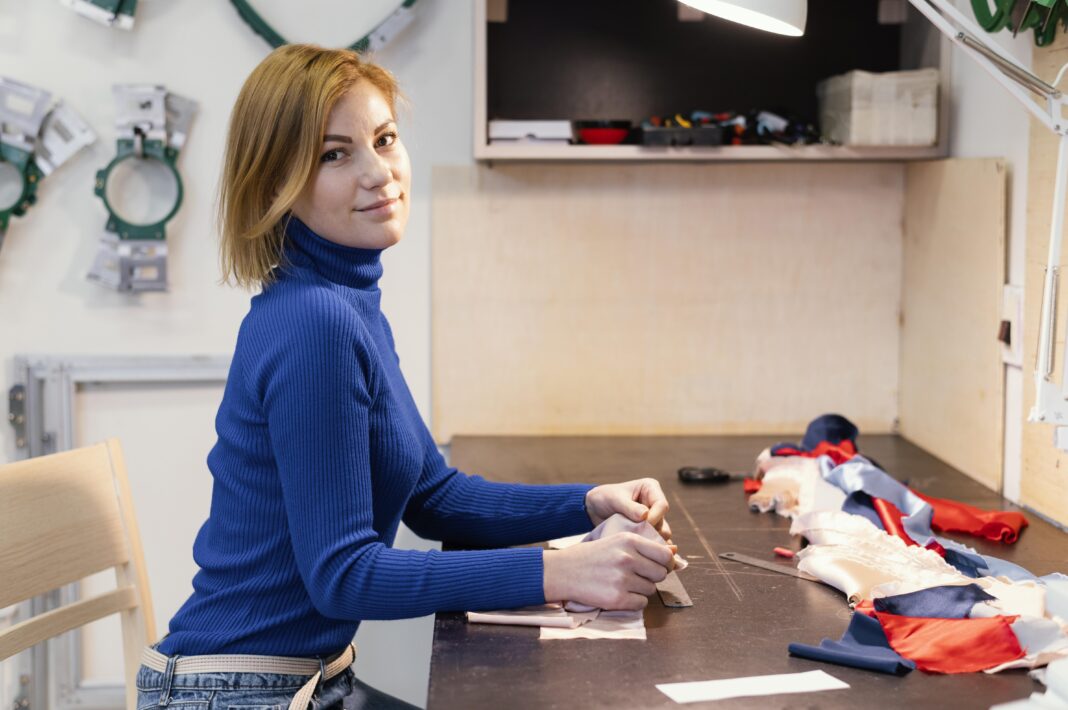Introduction to Nahttypen
When it comes to sewing, the right stitch can make all the difference. Whether you’re crafting a beautiful garment or mending a favorite piece, understanding the Nahttypen various types of seams—is essential. Each stitch serves a unique purpose and adds character to your work. With countless styles available, knowing which one to choose can be overwhelming. Fear not! This guide will demystify Nahttypen and help you select the perfect seam for every project, ensuring your creations are both durable and aesthetically pleasing. Let’s dive into the world of stitching!
Nahttypen refer to the various types of seams used in sewing. Understanding these stitches is crucial for achieving the desired look and functionality in your projects. Each type has specific characteristics that cater to different materials and purposes.
For instance, a straight stitch is versatile and perfect for most general sewing tasks. On the other hand, a zigzag stitch allows for stretch, making it ideal for knits or elastic fabrics. The right choice can enhance durability while ensuring your work holds up over time.
When considering Nahttypen, think about not just how they appear but also how they perform under stress. A well-chosen seam can elevate your project from ordinary to extraordinary, adding both strength and style.
Understanding Nahttypen
Nahttypen, or seam types, are fundamental in sewing and garment construction. They determine how fabric pieces hold together and affect the final look of a project. Understanding these stitches is crucial for both novice sewers and seasoned professionals alike.
Various nahttypen serve different purposes, from basic seams that provide strength to decorative options that enhance visual appeal. Each stitch type has unique characteristics based on its structure and function.
Choosing the right nahttyp can influence not only durability but also comfort and movement within the garment. It’s essential to familiarize yourself with these stitching techniques to elevate your sewing game effectively.
Importance of Nahttypen in Design
Nahttypen play a crucial role in design, influencing both functionality and aesthetics. The choice of stitch can transform a simple fabric into a stunning piece while ensuring durability. Designers rely on various nahttypen to communicate style and purpose.
Each type of seam serves its unique function, whether for strength or decorative appeal. A well-placed stitch enhances the garment’s form and fit while providing structural integrity. This balance is essential for achieving professional-quality results.
In addition to performance, nahttypen contribute to the overall look of a project. From sleek finishes to intricate details, they offer endless possibilities for creativity. Understanding these stitches can elevate any design from ordinary to extraordinary.
Common Seam Types
When diving into Nahttypen, understanding common seam types is essential. Each type serves a unique purpose and enhances the integrity of your project.
The straight stitch is the most basic yet versatile option, perfect for simple seams in woven fabrics. It provides strength while remaining inconspicuous.
For added durability, consider a zigzag stitch. This allows for stretch and flexibility, making it ideal for knits or activewear. French seams offer a clean finish on delicate fabrics by encasing raw edges within the seam itself, preventing fraying over time.
Choosing the right type can impact not only durability but also aesthetics in your projects. Understanding these can elevate your sewing game significantly.
Choosing and Using Nahttypen
Choosing the right Nahttypen for your project is essential. Start by considering the fabric type and its intended use. Lightweight fabrics, like chiffon, require delicate stitches, while heavier materials benefit from sturdier seams.
Next, think about the garment’s design and function. If it’s a high-stress area, opt for reinforced seams that offer durability without sacrificing style. Take time to experiment with different stitch types on scrap fabric before committing to your final piece.
Using Nahttypen correctly can greatly enhance your project’s quality. Ensure you’re using the appropriate needle size and thread type for optimal results. Adjusting tension on your sewing machine may also improve seam strength and appearance as you work through each step of construction.
Impact and Application of Nahttypen
Nahttypen play a crucial role in determining the functionality and aesthetic of any textile project. The choice of stitch can influence not only the fabric’s look but also its durability and comfort. Each Nahttyp serves a unique purpose, making it essential to select wisely based on the intended use.
In fashion design, different seam types enhance garment structure while allowing for movement and flexibility. For instance, flat seams provide smooth finishes for activewear, whereas double-stitched seams offer strength in high-stress areas.
Beyond clothing, Nahttypen find applications in upholstery and home décor. They contribute to both visual appeal and longevity of furniture pieces by ensuring that seams withstand everyday wear without compromising style or integrity.
Avoiding Common Mistakes
Choosing the right Nahttypen can be tricky, especially for beginners. One common mistake is using a stitch that doesn’t match the fabric type. Always consider the material’s thickness and stretch when selecting your stitch.
Another frequent error involves ignoring seam allowances. Many patterns come with specific allowances, and deviating from them can affect fit and durability. Stick to what’s recommended to avoid unnecessary issues later on.
Don’t overlook testing your stitches before starting your project. A simple test piece can reveal how well different nahttypen perform together. This small step saves time and frustration down the line by ensuring you’re making informed choices from the start.
Core Nahttypen
Core Nahttypen are the foundation of any sewing project. These stitches provide strength and stability, ensuring your creations withstand wear over time. Understanding these fundamental seam types is essential for both beginners and experienced sewers alike.
The straight stitch remains the most common choice. It’s versatile and perfect for seams on woven fabrics. Then there’s the zigzag stitch, which offers elasticity—ideal for knit materials or finishing raw edges.
Another crucial type is the French seam, providing a neat finish by enclosing raw edges within two stitched lines. This method not only enhances durability but also adds a touch of professionalism to garments, making it popular among fashion designers exploring high-quality craftsmanship.
Decorative and Specialty Nahttypen
Decorative and specialty nahttypen add flair to your projects, turning simple seams into striking design elements. These stitches often serve a dual purpose: functional integrity and visual appeal. Think of them as the icing on the cake for textiles.
Common examples include scallop stitches, which create beautiful curves along edges, or satin stitches that give a luxurious finish to appliqués. Specialty nahttypen can also involve embroidery techniques that enhance fabric texture and detail.
When selecting these types of seams, consider both the fabric type and intended use. Decorative nahttypen should complement your overall design while maintaining durability. The right stitch can elevate your project from ordinary to extraordinary, showcasing your creativity in every detail.
Tips for Seam Selection
When selecting the right Nahttypen, consider the fabric type first. Lightweight fabrics benefit from delicate seams like French or flat-felled stitches. Heavier materials require more robust options, such as double-stitched seams for durability.
Next, think about the project’s purpose. For garments that will face wear and tear, opt for stronger seam types to ensure longevity. If your focus is on aesthetics, decorative stitches can add a unique flair while still providing functionality.
Always test your chosen stitch on scrap fabric before committing to your main piece. This practice helps you assess how well the seam holds up and whether it suits both the material and design vision you have in mind.
Proper Usage and Maintenance
To ensure your Nahttypen perform optimally, proper usage is key. Always select the right stitch for the fabric type and project requirements. A lightweight fabric demands a more delicate seam, while heavy-duty materials require robust stitches.
Regular maintenance of your sewing machine will help preserve its functionality. Clean the machine after each project to prevent dust and lint buildup in essential areas. Lubricate moving parts as recommended by the manufacturer to keep everything running smoothly.
Additionally, inspect seams regularly for any signs of wear or fraying. Address issues early on to avoid extensive damage later. By taking these steps, you can prolong both the life of your stitching and overall project quality.
Durability and Aesthetics
Durability and aesthetics are crucial when selecting nahttypen for any project. The right stitch not only holds your fabric together but also enhances the overall appearance of your creation. Well-chosen seams can add elegance, while poorly executed ones may detract from your design.
Consider the materials involved in your project. Some stitches work better with specific fabrics, ensuring that both strength and visual appeal are maintained. For instance, a flatlock seam is ideal for stretchy materials, providing durability without compromising style.
Additionally, decorative stitches can elevate a simple garment into something extraordinary. They offer an opportunity to showcase creativity while reinforcing seams where needed. Balancing these elements leads to stunning results that stand the test of time.
Nahttypen in Fashion and Industry
Nahttypen play a crucial role in both fashion and industry, influencing the overall look and functionality of garments. In fashion, designers select seams that not only enhance aesthetics but also contribute to comfort and movement. The right stitch can elevate a simple piece into a statement.
In industrial applications, Nahttypen are essential for durability and performance. Industries demand specific seams to withstand stress and wear over time. Understanding these requirements ensures products meet safety standards while maintaining their integrity.
Fashion trends often dictate innovative stitching techniques, pushing boundaries on what’s possible with fabric manipulation. As the industry evolves, so does the importance of mastering various Nahttypen for diverse applications across multiple sectors.
Seam Selection Errors
Seam selection errors can lead to frustrating outcomes in any sewing project. Choosing the wrong Nahttypen may compromise the garment’s fit, durability, or even its aesthetic appeal. For example, using a straight stitch on stretchy fabrics can result in seams that pop or break under tension.
Another common mistake is ignoring fabric weight and type when selecting stitches. Lightweight materials often require finer threads and delicate stitches for adequate support, while heavier fabrics need robust stitching methods to withstand wear and tear.
Many sewers also overlook seam allowances during their initial planning stages. Incorrect allowances can lead to fitting issues or wasted fabric, making it essential to measure carefully before starting your project. A little extra attention here goes a long way!
Techniques to Prevent Mistakes
When working with Nahttypen, taking proactive measures can save you time and frustration. Start by familiarizing yourself with the different seam types before beginning your project. Create a swatch using various stitches to see how they behave under stress.
Always use high-quality thread that corresponds to your fabric type for optimal results. A sewing machine manual is an invaluable resource; refer to it often for specific guidance on each stitch option available.
Careful planning is essential. Make sure you account for fabric thickness and intended wear when choosing seams. If you’re uncertain, consult experts or online communities dedicated to sewing techniques.
Utilize proper tension settings on your sewing machine as this will greatly affect the quality of your seams. Regular maintenance of your tools also ensures smooth operation during projects.
By embracing these practices, you’ll significantly reduce common errors related to Nahttypen and achieve professional-looking results in all your sewing endeavors.



